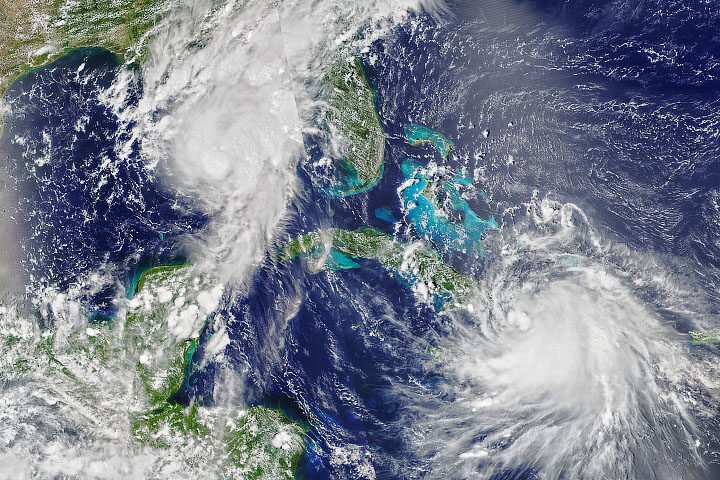The 2020 Atlantic Hurricane season, which runs from June 1 to November 30, is off to an extremely active start. For the first time in modern history, nine named storms formed in the basin before August 1. (The historical average is two storms before August 1.) The National Hurricane Center predicted 19 to 25 named Atlantic storms in 2020, with 7 to 11 of those storms strong enough to be classified as hurricanes.

Accessing NASA data to track and research these events can sometimes feel like a maze. For a comprehensive starting point, Earthdata has a new Cyclones Data Pathfinder summarizing the data available for pre-assessing storms, making near real-time assessments, and conducting post-storm analysis. There is clear information on where to find and easily visualize those datasets.
In addition, you will find an article in the “Learn” section of Earthdata that covers the improvements made to hurricane forecasts and near real-time observations in recent years and what future NASA missions might bring to the study of tropical storms. It also examines some different satellite observations that can contribute to better forecasting, such as sea surface temperatures (SST) and soil moisture measurements.
For the developers, the Earth Observatory Natural Event Tracker (EONET) can be used to monitor tropical storms through an API that provides up-to-date metadata for a variety of curated natural events. Use the How-to Guide to find out more about how EONET can be used to track storms.




El programa me parese muy interesante,de mucha ayuda para prevenir desastres en tiempo real.